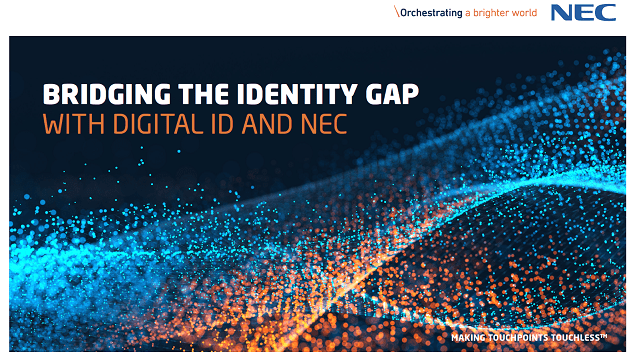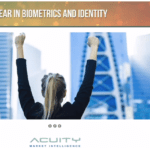This is a guest post by Micah Willbrand, Vice President of Product Development, NEC Corporation of America
In our previous blog posts on Digital ID, we described the problem of the Identity Gap – the disconnect between our offline and online identities – and how a Digital ID solution uniting them can be used to make the air travel experience more convenient and secure while protecting travelers’ most sensitive personal information. Today, we’ll turn our attention to the workplace.
Across a wide range of sectors, various organizations had already been undergoing a dramatic digital transformation over the last several years prior to the pandemic. But in the wake of COVID-19, this process has accelerated. Employers have been compelled to rapidly adjust to hybrid work scenarios in which employees are permitted to work remotely. The hybrid work environment has forced various transactions – doing business with partners, sharing files with clients, and so on – into digital channels.

This rapid shift has opened new security vulnerabilities. Infrastructural IT planning that would normally take shape over the course of months or years for some organizations suddenly had to be implemented within a matter of weeks, and in many instances security concerns were not prioritized. The result is a security patchwork in which employees have to remember one password for remote login and a different password for their in-office workstation, while carrying a fob to get in the building and a different key to access a filing cabinet, and so on.
The result is increased employee frustration, lost productivity, overwhelmed IT support desks, and fraudsters or malefactors slipping through the cracks to obtain sensitive information.
The solution is Digital ID delivered through a comprehensive platform. That’s because the crux of the issue described above is the Identity Gap, which in this case describes the disconnect between an employee’s remote digital identity and their traditional office identity. Neither of these identities are able to easily access the corporate assets available to the other. To resolve the issue, a given employee needs to be able to easily prove their identity through digital channels and in-person, and the best way to make that possible is to offer a single, unified identity platform that operates across the enterprise.
Taking the example of NEC I:Delight, an employee could register their face and relevant credentials on a mobile device, and then use that device for all subsequent authentication instances. On-device biometric authentication could regulate remote access to corporate assets like employee email and shared files and could also be used to enable easy access to these same assets in the office. What’s more, it could be used to access the office itself, with employees using their smartphones as contactless keycards at the front door.
Essentially, biometrically-secured Digital ID can be used to reliably authenticate any employee at any touchpoint across the enterprise. This would dramatically reduce pressure on IT support teams thanks to its virtual elimination of password reset requests and similar calls for help in accessing corporate assets. It would also beef up security: Digital IDs are invulnerable to phishing attempts, and their use of biometric security ensures that fraudsters can’t impersonate employees to gain access to sensitive material.
Better yet, all of this is achieved while ensuring the highest privacy protection for employees, who don’t need to share any sensitive personal information to gain access to corporate assets. Biometric Digital ID essentially offers a yes-or-no answer to the question of whether a given user really is the employee they claim to be. Even in remote channels, there is no need to ask for information like date of birth or home address. Digital ID protects employees’ personal data, and in so doing helps to ensure that employers are compliant with any relevant privacy regulations.
To learn more about how your organization can implement enterprise-wide Digital ID to make work a delight, download NEC’s new workplace-focused executive brief “Secure Physical Space and Data Access with a Combined Digital ID” by filling out the form below:









Follow Us